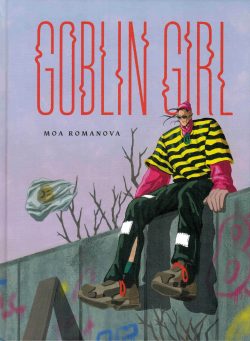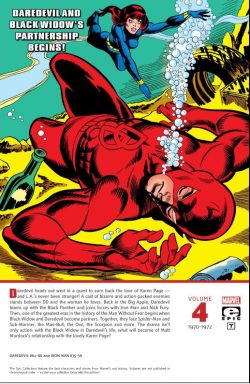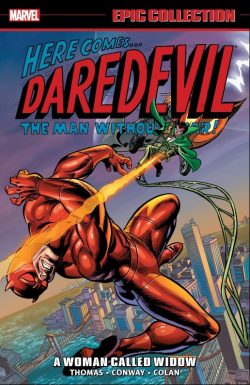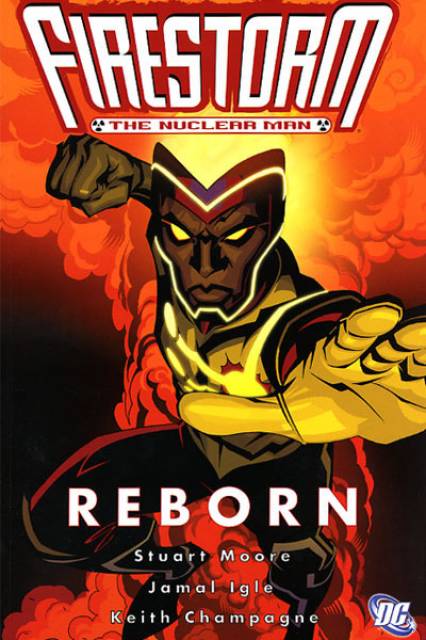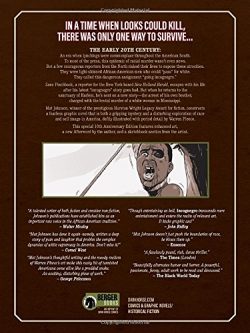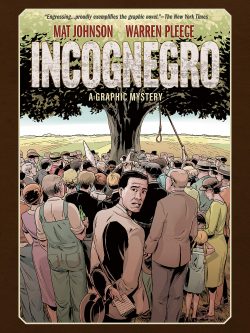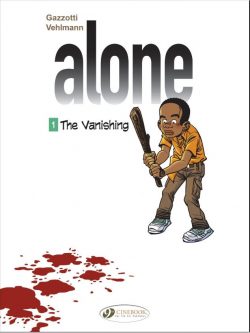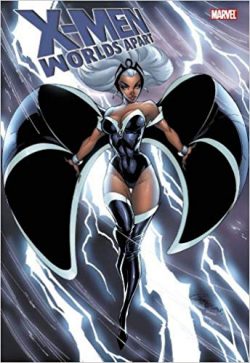
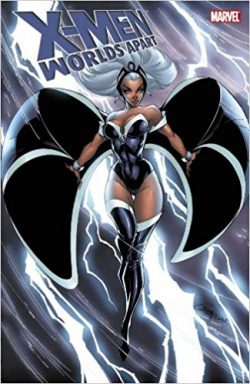
By Christopher Yost, Diogenes Neves & Ed Tadeo; Priest, Sal Velluto & Bob Almond; Chris Claremont & John Byrne, & various (Marvel)
ISBN: 978-0-7851-4030-6 (HB) 978-0-7851-3533-3 (TPB)
In 1963 The X-Men #1 introduced Cyclops, Iceman, Angel, Marvel Girl and the Beast: very special students of Professor Charles Xavier, a wheelchair-bound telepath dedicated to brokering peace and integration between the masses of humanity and the emergent off-shoot race of mutants – Homo Superior.
After years of eccentric and spectacular adventures the mutant misfits disappeared at the beginning of 1970 as mystery and all things supernatural once more gripped the world’s entertainment fields and triggered a sustained downturn in costumed hero comics.
Although their title was revived at the end of the year as a cheap reprint vehicle, the missing mutants were reduced to guest-stars and bit-players throughout the Marvel universe and the Beast was transformed into a monster to cash in on the horror boom, until Marvel editor-in-chief Roy Thomas green-lighted a bold one-shot in 1975 as part of the company’s line of Giant-Sized specials.
Giant Size X-Men #1 detailed how the classic team had been lost in action, leaving Xavier to scour the Earth for a replacement team. Recruiting old foes-turned-friends Banshee and Sunfire and throwaway Hulk villain Wolverine, most of the savant’s time and attention was invested in newcomers. These comprised Kurt Wagner, a demonic German teleporter who would be codenamed Nightcrawler, Russian farmboy Peter Rasputin, who could transform into a living steel Colossus, embittered, disillusioned Apache superman John Proudstar who was cajoled into joining the makeshift squad as Thunderbird and a young woman who was regarded as an African weather goddess.
Ororo Munroe AKA Storm was actually the lost daughter of Kenyan royalty and an American journalist. On joining Xavier’s team, she spent years fighting the world’s most deadly threats as part – and eventually leader – of the outlaw, unloved, distrusted mutant hero horde, before eventually leaving her second home to marry a boy she had met whilst trekking across the Dark Continent decades previously.
In Fantastic Four #52 (August 1966) an incredible individual calling himself the Black Panther tested himself against the Cosmic Quartet and disclosed in the following issue how, as a child, he had lost his father to a ruthless scientist’s mercenary army when they invaded his hidden African homeland Wakanda.
Young Prince T’Challa had single-handedly avenged the murder of his father T’Chaka and driven off the raiders, inheriting the role of king and spiritual leader of his people. Eventually, he became a member of the Mighty Avengersand introduced his country to the world, with technologically-advanced Wakanda swiftly advancing to the forefront of nations by trading its scientific secrets and greatest natural resource – incredible alien mineral Vibranium.
Whilst a boy wandering the plains of Africa, he had encountered a beautiful young girl with incredible powers trekking from Egypt to West Africa. Years later he found her again as one the X-Men. Slowly rediscovering old feelings, the pair married and Storm became the First Lady of Wakanda…
This compilation collects 4-issue miniseries X-Men: Worlds Apart from 2008-2009, Black Panther volume 3, #26 (January 2001) and material from Marvel Team-Up #100 (December 1980), and follows the African Queen through her darkest hours even as it affords a little space to examine key moments in her tempestuous relationship with the earthly agent of the very-real, very paws-on Panther God.
The romance commences with the eponymous ‘Worlds Apart’ crafted by Christopher Yost, Diogenes Neves, Ed Tadeo & Raul Treviño, with the action opening in New York’s sewers where Storm and some-time comrade Cyclops seek to convince hidden Morlock refugees to join the West Coast mutant enclave and safe-haven known as Utopia. When she is suddenly called back to Africa, Ororo’s erstwhile friend contentiously questions her loyalties…
Even as august and elevated co-ruler of a fabulous kingdom, Ororo iq adi T’Challa is still painfully aware of humanity’s – and more specifically her own subjects’ – bigotry regarding the genetic offshoot politely dubbed Homo Superior. When one of her protégés – young Wakandan mutant Nezhno Abidemi – is accused of murder she rushes to defend him.
…But the evidence is overwhelming, incontrovertible and damning…
Nevertheless, she knows something is amiss and when she arbitrarily frees him, the entire country turns against her. Even her adoring husband wants her blood…
The cause soon smugly reveals himself as Amahl Farouk: a sinister, soul-corrupting telepath she and Charles Xavier killed years ago, when she was merely an orphan child-thief in Cairo. Sadly, the dying monster evolved into a malign body-stealing psychic force; an untouchable Shadow King feeding on hatred and polluting everything it touches…
Biding its time, Shadow King insinuated itself into Wakanda, stoking ill-feeling throughout. Now wearing her beloved T’Challa, it plans on extracting a much-postponed final vengeance…
As the poisonous presence gloats, Ororo realises it is not just her at risk: the Shadow King has simultaneously taken Cyclops in America and is using her fellow X-Man as a weapon to kill the only earthly threat to Farouk’s power – supreme telepath Emma Frost, who is also Scott Summers’ lover…
With an entire nation and the precious body of her beloved mercilessly hunting her and Nezhno, the wondrous weather-warrior must first direct her powers half a world away to stop Cyclops whatever the cost, before somehow destroying a foe no power on Earth can touch.
Happily, the Spiritual co-ruler of Wakanda has her own direct line to the country’s cat god – or is that goddess?
Short, sharp, spectacularly action-packed and wickedly satisfying – especially the climactic battles with the assembled X-Men and friendly rival Cyclops – this bombastic Fights ‘n’ Tights adventure is rather bafflingly complemented with ‘Echoes’ from Black Panther #26. Created by Priest, Sal Velluto & Bob Almond, it’s the opening part of a longer epic entitled ‘Stürm und Drang – a Story of Love and War’. Here T’Challa’s childhood friendship with Ororo is slowly and painfully re-cultivated during an incursion into Wakanda by alien-hunting US Federal Agents, and a barely-civil embassy from the secret race known as Deviants, all seeking possession of an unearthly parent and child. The untenable situation eventually forces a drastic reaction from the sympathetic African heroes…
As an orphaned part of an ongoing storyline, this interlude, although smart and pretty, is pretty baffling and aggravating too, ending as it does on an unsatisfying cliffhanger, and unless you already know the greater tale, is far more annoying than elucidating…
Still at least you can track down the entire tale in numerous Black Panther collections…
This intriguing safari into the unknown concludes with the far more pleasing – and done-in-one – story of Ororo and T’Challa’s first meeting as kids in the wilds of Africa. It first appeared as a back-up in Marvel Team-Up #100 in 1980, cleverly revealing how the kids enjoyed an idyllic time on the veldt (reminiscent of Henry De Vere Stacpoole’s 1908 novel The Blue Lagoon) until a South African commando team tried to kidnap the Wakandan prince as a bargaining chip.
Now, as adults in America they are hunted by the vicious Afrikaner Andreas de Ruyter who has returned, attempting to assassinate Ororo before seeking to exact final revenge upon the Black Panther. Cue long-delayed lover’s reunion and team-raid on an automated House of Horrors…
Clearly designed as an outreach project to draw in audience demographics perceived to be short-changed by mainstream Marvel, Storm and the Black Panther have proved to be a winning combination in terms of story if not sales, and Worlds Apart is the kind of tale that will please fans of the genre and followers of the film franchises.
© 1980, 2001, 2008, 2009 Marvel Characters, Inc. All rights reserved.




